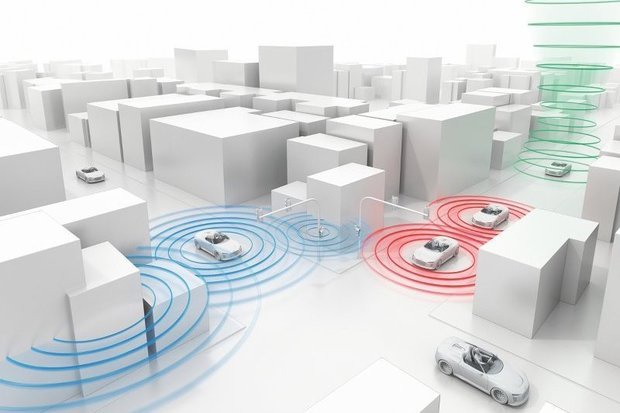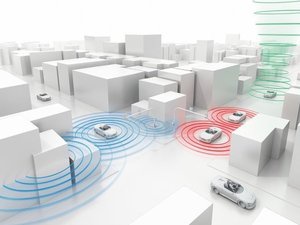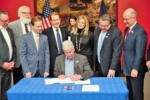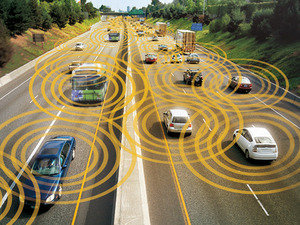The U.S. Department of Transportation (DOT) has published a proposed rule that would require all light-duty vehicles to come with vehicle-to-vehicle (V2V) communications technology to help avoid collisions.
The technology, DOT said, could help prevent hundreds of thousands of crashes a year that occur when one vehicle is unaware of what another is doing.
"We are carrying the ball as far as we can to realize the potential of transportation technology to save lives," Transportation Secretary Anthony Foxx said in a statement. "This long promised V2V rule is the next step in that progression. Once deployed, V2V will provide 360-degree situational awareness on the road and will help us enhance vehicle safety."
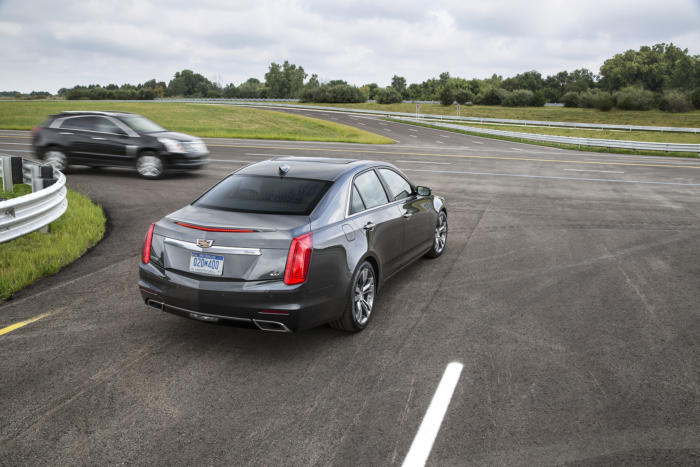 General Motors
General Motors A 2015 Cadillac CTS with V2V technology notifies the driver of the approaching car.
The proposed rule, now in a 90-day comment period, would require automakers to include V2V technologies in all new light-duty vehicles (cars and trucks that weigh 10,000 pounds or less when fully loaded).
It also proposes normalizing the electronic language that vehicles use by standardizing messaging developed in the auto industry.
Separately, the Federal Highway Administration plans to soon issue guidance for Vehicle-to-Infrastructure (V2I) communications, which will help transportation planners integrate the technologies that allow vehicles to "talk" to roadway infrastructure such as traffic lights, stop signs and work zones. The goal: to improve mobility, reduce congestion and improve safety.
In February 2014, Foxx announced the DOT would accelerate its work to enable V2V, directing the National Highway Traffic Safety Administration (NHTSA) to begin work on the rulemaking. NHTSA issued an Advance Notice of Proposed Rulemaking in August 2014. That move complements the DOT's efforts to accelerate the development and deployment of automated vehicles.
Anticipating the NHTSA's connected vehicle mandate, automakers have been busily preparing the hardware and software components of V2V and V2I systems.
For example, Cadillac will deploy connected vehicle technology on at least one model in late 2016, with an estimated production of 40,000 vehicles.
And Audi last week announced that select 2017 Audi A4, Q7 and allroad models (built after June 2016) will be able to communicate with Wi-Fi-enabled traffic lights that can inform drivers when red lights will turn green.
Audi's "time-to-green" traffic light feature is the first to leverage the Audi Traffic Light Information service, which is the first step in V2I and V2V electronic communications for the automaker.
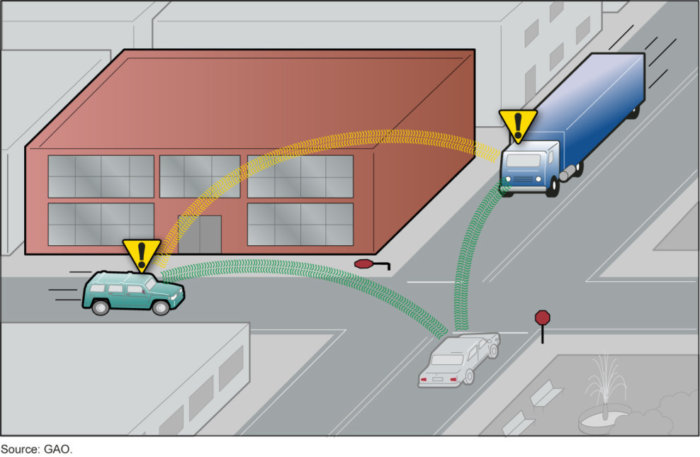 DOT
DOT Here's how V2V communication technology could help vehicles avoid crashes at intersections.
V2I and V2V will eventually allow cars, motorcycles, trucks, buses and trains to "talk" to each other and to different parts of roadway infrastructure such as traffic signals, work zones, toll booths, and school zones. The exchange of information could make surface transportation safer, smarter and greener.
For example, roadway cameras, sensors and Wi-Fi-enabled vehicles will be able to communicate traffic information in real time to other vehicles and alert drivers to accidents or traffic jams. Combined with autonomous driving technology, V2I and V2V will be able to manage traffic flow more efficiently.
Michigan, which just approved driverless cars and trucks on its roadways, is home to the largest deployment of V2I electronic communications technology in its Smart Corridor. The corridor is a series of public highways -- more than 120 miles in all -- in Southeast Michigan that have more than 100 Dedicated Short Range Communications (DSRC) transponder units. The DSRC units share traffic information with cars and trucks that have V2I and vehicle-to-vehicle (V2V) communications technology and alert drivers to potential problems to prevent accidents.
For example, if a V2V-enabled car makes a sudden stop in heavy fog or its stability control engages on a rain-slicked road, every V2V-enabled car around it will know almost instantly, giving drivers time to react.
The NHTSA estimates that safety applications enabled by V2V and V2I could eliminate or mitigate the severity of up to 80% of non-impaired crashes, including crashes at intersections or while changing lanes.
V2V devices would use dedicated short range communications (DSRC) to transmit data such as location, direction and speed to nearby vehicles. That data would be updated and broadcast up to 10 times per second to nearby vehicles; using that information, V2V-equipped vehicles can identify risks and warn drivers of imminent crashes. Vehicles that contain automated driving functions — such as automatic emergency braking and adaptive cruise control — could also benefit from the use of V2V data to better avoid or reduce crashes.
V2V communications can provide the vehicle and driver with enhanced abilities to address other crash situations, including those, for example, in which a driver needs to decide whether it is safe to pass on a two-lane road (potential head-on collision); make a left turn across the path of oncoming traffic; or determine that a vehicle approaching an intersection appears to be on a collision course. In those situations, V2V communications can detect developing threat situations hundreds of yards away, and often in situations in which the driver and on-board sensors alone cannot detect the threat.
The NHTSA also said a driver's privacy would be protected in V2V safety transmissions because they doesn't involve the exchange of information linked to or, as a practical matter, linkable to an individual. The rule would require extensive privacy and security controls in any V2V devices.
This story, "Feds want cars to talk to each other to avoid crashes" was originally published by Computerworld.

